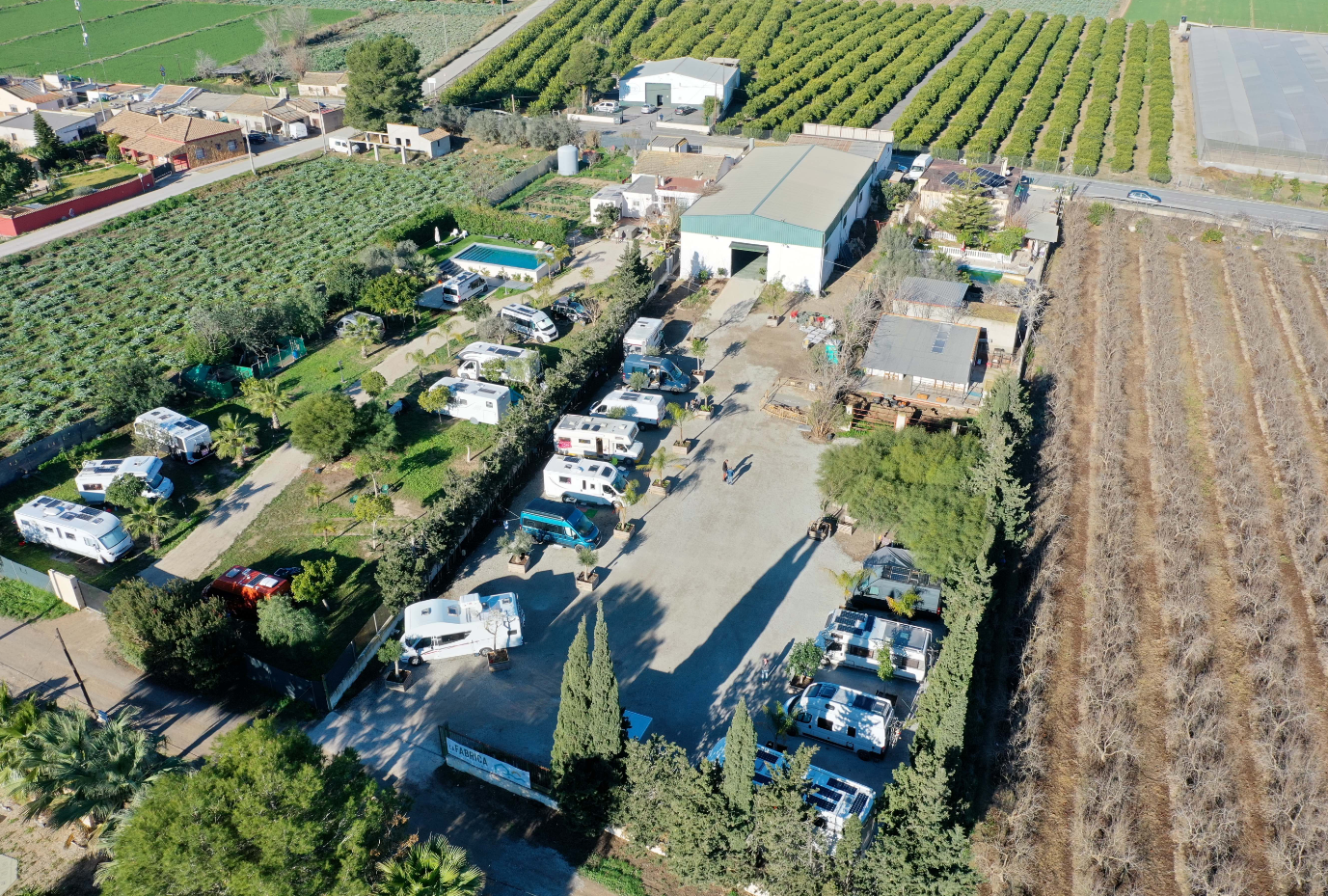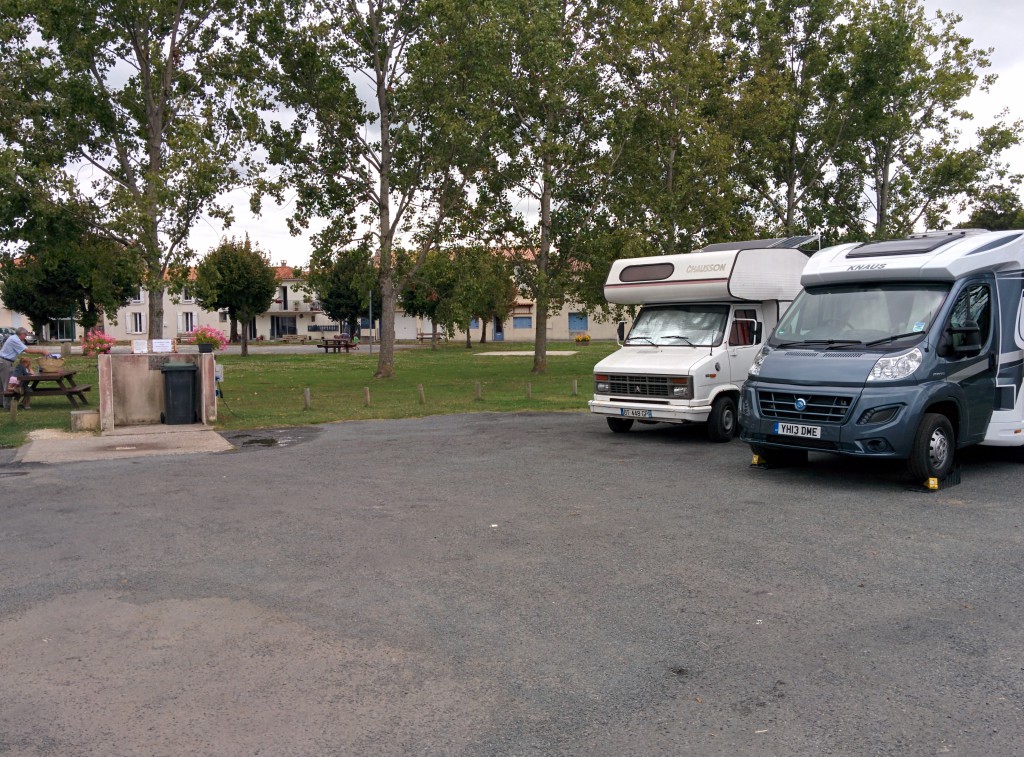Spain is one of the favorite countries of the motorhomes travelers.. who can say the opposite? You are planning a motorhome trip to Spain soon and want to be up to date on the motorhome rules in Spain ? Let’s figure it out in this new article!
Rules for driving and parking a motorhome in Spain
Driving a motorhome
What licence do I need to drive a motorhome?
If you are planning to drive a motorhome weighing 3.5 tonnes or less in Spain, you will need your B licence. However, if you want to drive a motorhome weighing more than 3.5 tonnes, you will need at least a C1 licence. Bear in mind that when we talk about maximum weight, we are referring to the weight that the motorhome can reach when it has already been loaded with passengers and luggage.
Is there a special Highway Code for motorhomes?
In Spain, motor caravans, including those weighing less than 3.5 tonnes, are considered to be class M1 vehicles! Speed limits are therefore different from those for cars.
As a reminder, here are the current speed limits for motor caravans weighing less than 3.5 tonnes in Spain:
50 km/h in urban areas
80 km/h outside urban areas
90 km/h on national roads with hard shoulder
100 km/h on motorways and autovías
Motor homes over 3.5 tonnes will also have to comply with different regulations:
50 km/h in urban areas
80 km/h outside urban areas
80 km/h on national roads with hard shoulder
90 km/h on motorways and autovías
What are the motorway charges when travelling in a motorhome in Spain?
Toll prices vary according to the area, the period you are travelling and the category of your vehicle. You can find here the different rates charged on each motorway and the different categories of vehicle. There are currently three categories of vehicle liable to pay tolls in Spain: ligeros (light vehicles), pesados 1 (heavy vehicles 1) and pesados 2 (heavy vehicles 2). In general, motorhomes pay the same rate as light vehicles. If you have any doubt about the category of your vehicle, you can consult the official Autopistas website.
However, it’s easy to travel on Spain’s free motorways. Just bear in mind that free roads will always be busier, especially in summer!
Motorhome parking in Spain

According to the DGT (Dirección General de Tráfico), motorhomes are subject to the same parking regulations as cars
On Tuesday 11/07/2023, the DGT (General Direction for Traffic) updated the regulations governing the parking of motor caravans.
It has decided to make an explicit distinction between parking and camping, something that had always been unclear. Until this date, the autonomous communities had been defining their own rules, sometimes in an abusive manner, generating conflicts with motorhome owners who were fined without much explanation.
From now on, a clear distinction will be made between motorhome parking, which is governed by the Highway Code, and camping, which is regulated by the Tourism Regulations.
A motorhome will be considered to be parked if it complies with these three rules:
- The only contact between the motorhome and the ground is through the wheels.
- The space occupied by the motorhome must not extend beyond the vehicle itself. You also have the right to open the roof as long as it does not extend beyond the perimeter of your motorhome.
- The motorhome must not emit any fluids or residues.
The revision of the parking regulations for motor caravans in Spain is a first step towards more specific regulations for this type of vehicle. It puts an end to years of ambiguity on this subject, much to the delight of motorhome owners!
To avoid any risk, head for service areas specially designed for motor caravans or campsites, using the CaraMaps application! You’ll find the best places to camp in complete peace of mind!
Wild camping in a motorhome in Spain
Wild camping is forbidden in Spain. There used to be a state regulation on wild camping dating back to 1966, but this was repealed by Royal Decree 39/2010. The latter decided that it was now up to the Autonomous Communities to legislate on the subject of wild camping. The legislation is even more complex than that. Indeed, it is the municipalities that take the final decisions on whether or not to authorise wild camping on their territory.
So while wild camping is tolerated to a greater or lesser extent in some regions, it can be subject to heavy penalties in others. It is therefore advisable to check with the local authorities if you are planning to go wild camping with your motorhome. It is absolutely forbidden to camp in Spanish national parks and on the coast. During the summer season, controls are also particularly tight.
For example, illegal camping is banned by decree in Aragon, where fines can range from 600 to 6,000 euros. In Asturias, wild camping is also banned, but is a minor offence punishable by fines of between €60 and €600. In the Balearic Islands, on the other hand, wild camping is permitted subject to certain conditions. You have to be at least 3 km from a municipal campsite or an urban area, and you cannot stay in one place for more than three days.
Want to find out more about wild camping in Spain? Have a look at our blog post “The best places for wild camping in Spain“!
What about the regulation of motorhomes in Spain in recent years?
Creation of environmental zones

Since 2021, a number of low-emission zones (ZBE) have been introduced in Spanish towns and cities, banning the use of vehicles without an environmental sticker. The aim is to reduce gas emissions, and this Europe-wide initiative is in line with the 2015 Paris Agreement.
In Spain, all municipalities with more than 50,000 inhabitants are expected to have implemented the new environmental regulations by the end of 2023. Only 12 cities have set up low-emission zones so far: Madrid, Barcelona, Cordoba, Pontevedra, Sevilla, Badalona, Rivas-Vaciamadrid, San Cugat del Vallés, Sant Joan Despí, l’Hospitalet de Llobregat, Pamplona and Zaragoza. Each municipality sets its own access rules and defines its own boundaries.
As soon as a town has a low-emission zone, car and motorhome owners are required to obtain an environmental stickers, to be able to drive in these zones. Vehicles with an A sticker cannot drive in these zones because they are deemed too polluting. On the other hand, vehicles with B or C stickers can enter, but with restrictions. To find out which sticker your vehicle should have, visit the DGT website here.

Increasing restrictions on motorhomes
The Menorca Biosphere Reserve recently passed a law that will restrict vehicle access to the island during the summer of 2023. This restriction applies to both cars and camper vans, and may be extended to the other Balearic islands, including Ibiza. The law was introduced to protect Menorca’s biosphere reserve from pollution. It is also the result of growing pressure from the island’s inhabitants, who feel ‘invaded’ by recreational vehicles every summer.
Generally speaking, throughout the country, there is tension between itinerant travellers and the local authorities, some of which have no qualms about closing their car parks or service areas to avoid too large an influx. This is the case, for example, of the municipality of Cunit, in Catalonia, which wants to put an end to the parking of motorhomes on the seafront, believing that some users do not respect the basic parking rules, such as not taking out their furniture. The rules governing motorhomes are therefore likely to become stricter as summer approaches, and checks will become increasingly frequent. To travel with peace of mind, don’t hesitate to download the CaraMaps application to find the best addresses!

Planning a road-trip to Spain? Check out our bonus itinerary for a special trip to Spain!

In addition to this superb itinerary in Spain, discover other itineraries in this country shared by the community, such as «From the Basque Country to Andalusia through natural spots», «Travel to Andalusia passing through the major Spanish cities» and much more!
Did you enjoy the experience offered by CaraMaps and the advice from the community? Share your best anecdotes or photos thanks to the 100% collaborative CaraMaps application.
Follow us on our Instagram page @caramaps where you’ll discover some incredible spots, and on our Facebook page, where you’ll find new areas, new itineraries and news from the motorhome world every day!
Don’t hesitate to take a look at our blog posts such as «The best service areas in Spain 🇪🇸», «Motorhome rules in France in 2023» and many others!


